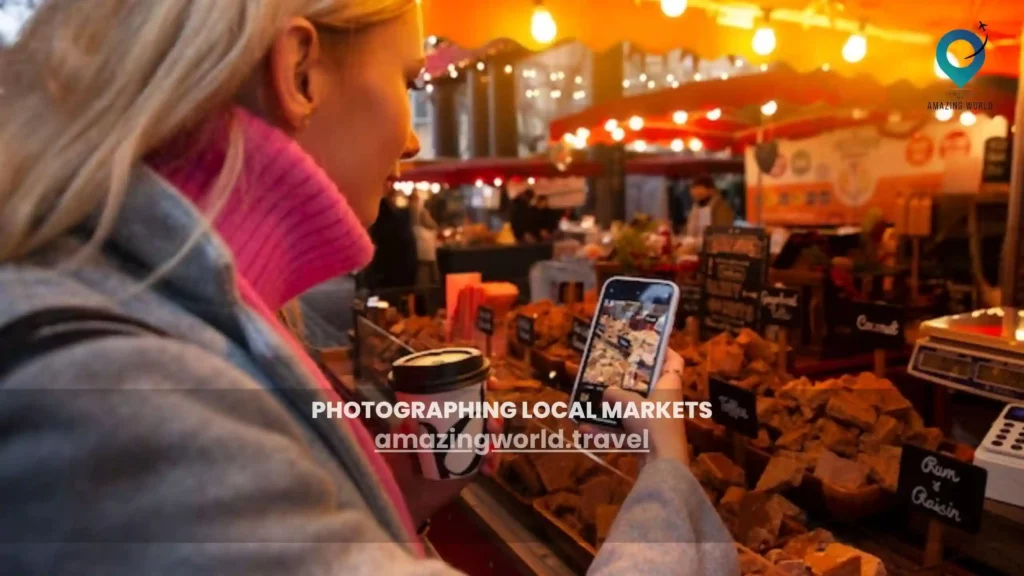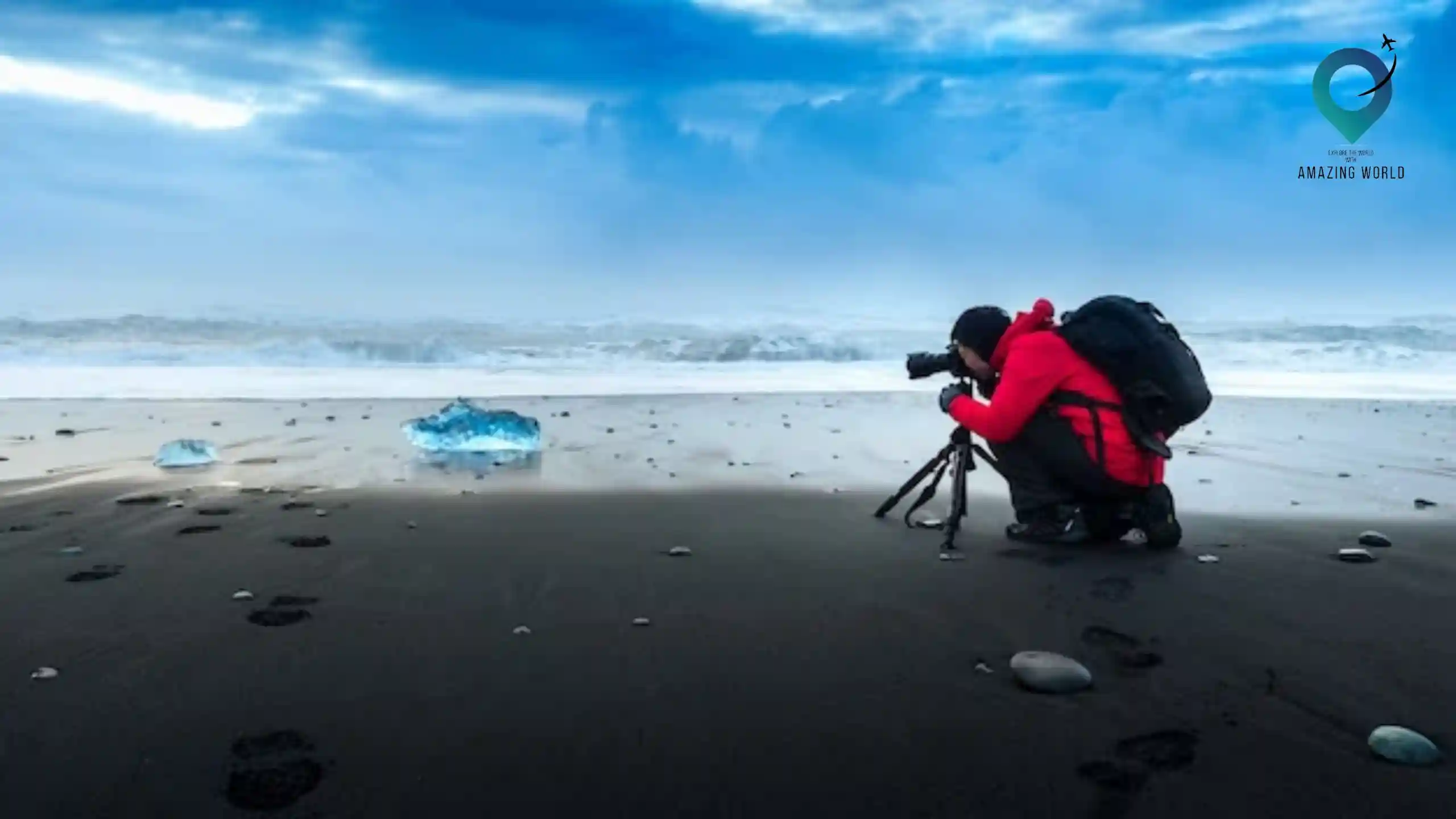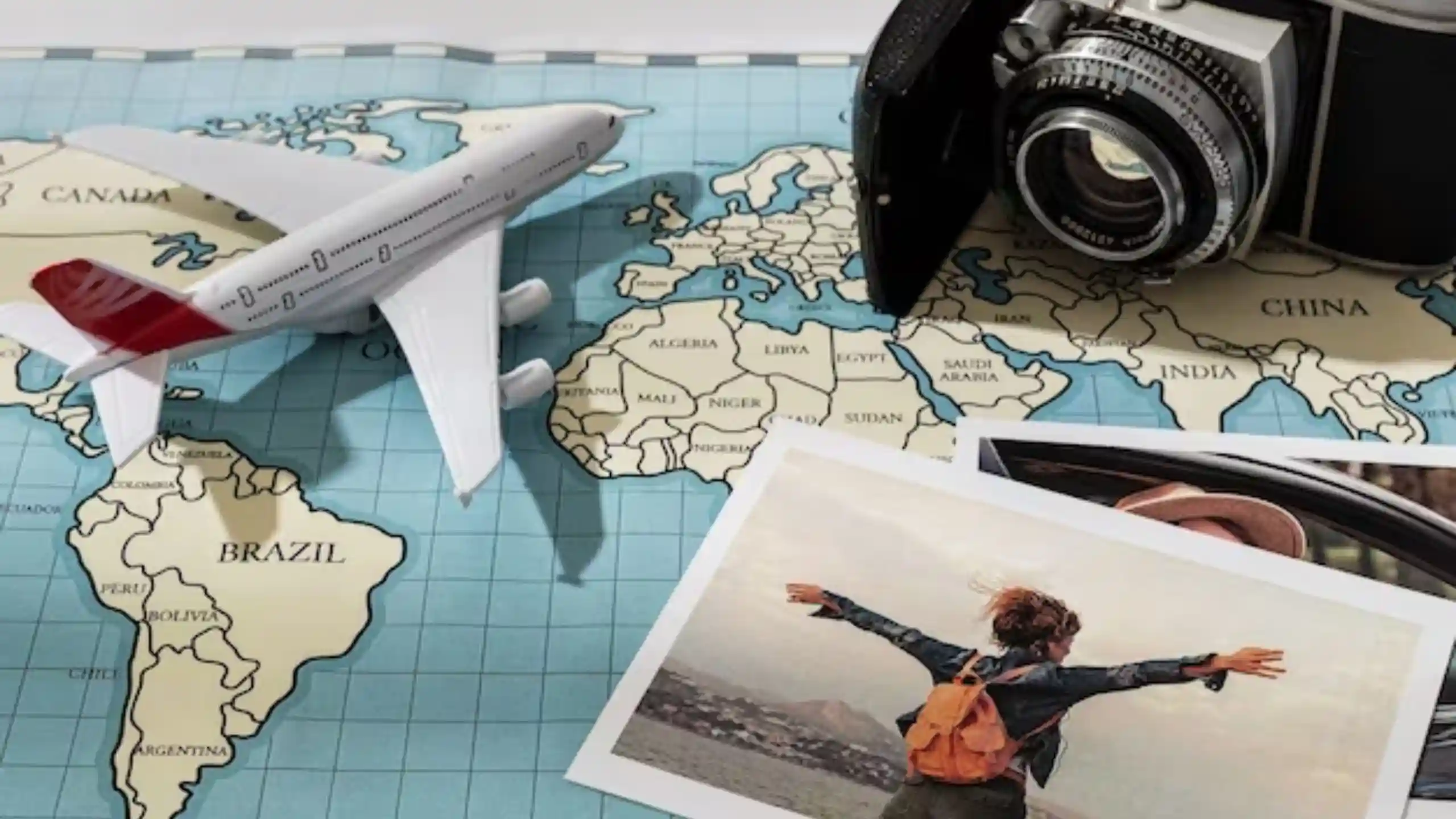Tips for Photographing Local MarketsWhen Travelling
Table of Contents
Toggle
Stepping into the vibrant world of market photography is like unveiling a canvas painted with the rich hues of culture and the intricate textures of community stories. In this journey, understanding the ethics of capturing these moments is just as essential as mastering the technical aspects.
Welcome to the realm of Ethical Market Photography, where we explore how to navigate the dynamic interplay between creativity, respect, and the captivating colors and textures that make these scenes come alive.
Let’s delve into the heart of capturing authenticity while honoring the people and cultures that enrich our visual narratives.
Choosing the Right Market
When photographing local markets, the first step is selecting the right market to capture the essence of colors and textures. Here’s a closer look at this critical aspect of market photography.
Vibrancy and Diversity: The magic of local markets lies in their vibrancy and diversity. Look for markets that mirror the culture, traditions, and community spirit of the area. Farmers’ markets, flea markets, and craft bazaars often offer a kaleidoscope of colors and textures that can make your photographs truly captivating.
Research and Exploration: Research the markets in your area before venturing out with your camera. Find out when and where they operate. Explore online forums and local event listings to discover hidden gems that might not be widely known but are brimming with photogenic potential.
Cultural Significance: Some markets hold special cultural significance that can enhance your photography. Markets tied to festivals or unique local customs often present an opportunity to capture traditional attire, customs, and rituals, adding depth and authenticity to your images.
Seasonal Variation: Keep in mind that markets change with the seasons. Farmers’ markets, for instance, offer different colors and textures throughout the year based on the available produce. Consider revisiting markets in different seasons to capture a diverse range of visual elements.
Capturing the Heart of the Community: Ultimately, choosing the right market is about capturing the heart of the community. Seek out markets that reflect the people, their stories, and the local culture. These elements will infuse your photographs with authenticity and emotional resonance.
Understanding Lighting and Timing
Lighting is the brushstroke that paints your market photographs with vibrant colors and textures. Timing, too, plays a crucial role in creating images that tell compelling stories. Let’s delve into the world of lighting and timing for market photography.
The Magic of Golden Hours: The golden hours—shortly after sunrise and just before sunset—bathe your subjects in warm, soft light. This softness enhances colors and textures while casting gentle shadows that add depth to your images. Embrace these hours for a natural and flattering illumination.
Avoiding Harsh Midday Sun: The midday sun can be harsh and create unflattering shadows. If you find yourself shooting during these hours, look for shaded areas or use diffusers to soften the light. Alternatively, explore indoor markets that offer controlled lighting conditions.
Morning Market Energy: Mornings are a prime time for market photography. Vendors are setting up their stalls, and patrons are exploding
with excitement. The hustle and bustle of morning activity provide ample opportunities to capture candid moments and vibrant interactions.
Twilight Magic: Don’t underestimate the charm of Twilight. The soft, diffused light during the twilight hours can cast a unique and enchanting glow over your subjects. Experiment with longer exposures to capture the magic of evening markets.
Adapting to Different Conditions: Adapting to varying lighting conditions is key to successful market photography. Whether you’re indoors or outdoors, during golden hours or midday, adjusting your camera settings to the lighting situation ensures your images reflect the true colors and textures of the market.
In the next sections, we’ll explore how your choice of equipment, as well as your composition techniques, can further enhance your market photography.
Equipment Selection: Cameras and Lenses

Your choice of equipment can make or break your market photography experience. The right cameras and lenses can help you capture the intricate colors and textures that define these vibrant spaces. Let’s dive into the world of equipment selection.
DSLR or Mirrorless: The Choice is Yours: Both DSLR and mirrorless cameras offer manual controls that allow you to adjust settings for various lighting conditions. Choose the one that feels most comfortable for you to work with, ensuring you have full creative control over your shots.
Embracing Lenses: Lenses play a pivotal role in market photography. A wide-angle lens enables you to capture the expansive scene of a bustling market, showcasing a variety of colors and textures in one frame. On the other hand, a prime lens lets you focus on intricate details, bringing out textures in close-up shots.
Wide-Angle Wonders: Wide-angle lenses, typically ranging from 10mm to 35mm, provide a sweeping view of the market landscape. These lenses are perfect for capturing the market’s overall atmosphere, from the vibrant displays to the busy patrons.
Prime for Details: Prime lenses, with a fixed focal length, are exceptional at highlighting details and textures. With a narrower field of view, these lenses excel at isolating a subject from its surroundings. Consider using a 50mm prime lens to capture the texture of a handwoven fabric or the intricate brushstrokes of a painting.
Finding Your Combo: A combination of both wide-angle and prime lenses in your camera bag equips you to tackle various scenarios. Switch between lenses to adapt to changing scenes and creatively capture the colors and textures that catch your eye.
The Ultimate Goal: Remember, the ultimate goal of your equipment selection is to capture the spirit of the market—its vibrant colors, rich textures, and the stories that unfold within its stalls. Choose gear that empowers you to translate the market’s essence into captivating images.
In the following sections, we’ll delve into the art of composing your market shots and mastering the art of capturing colors in your photographs.
Capturing Colors in Market Photography
Markets are a feast of colors, from vibrant produce to intricate handicrafts. To capture these colors effectively, adjust your white balance to complement the predominant hues. Contrast complementary colors for a visually striking effect. Use a shallow depth of field to isolate colorful subjects against blurred backgrounds.
Highlighting Textures for Added Impact
Textures add depth and dimension to your market photographs. Capture the roughness of woven baskets, the smoothness of fruits, and the intricate patterns of fabrics. Utilize soft, diffused lighting to emphasize textures without harsh shadows.
Interacting with Market Patrons

Engage with market patrons to capture candid moments of genuine interaction. Seek permission before taking portraits, and be respectful of people’s privacy. Capturing candid smiles and interactions adds a human touch to your market photography.
Exploring Candid Photography
Candid photography captures authentic moments without posed subjects. It’s a powerful way to convey the spirit of the market. Blend into the environment, use a telephoto lens for discreet shots, and capture people in their natural state.
Showcasing Vendor Stories
Behind every stall is a vendor with a unique story. Capture these narratives through your lens. Photograph artisans at work, farmers proudly displaying their produce, and vendors interacting with customers. These images provide context and emotional depth to your market photography.
Editing Techniques for Market Photos

Post-processing enhances your market photographs. Adjust contrast and saturation to bring out colors and textures. Use vignettes and filters to direct the viewer’s focus. Avoid over-editing; the goal is to enhance, not alter, the essence of the market.
Sharing Your Work: Social Media and Beyond
Share your market photographs with the world. Social media platforms like Instagram and Pinterest are perfect for showcasing your vibrant images. Consider printing your work for exhibitions or creating a portfolio on your website.
Preserving Cultural Sensitivity
Respect the cultural norms of the markets you photograph. Ask for permission before photographing people, especially in sensitive cultural contexts. Avoid intrusive behavior that may disrupt the market’s atmosphere.
Ethical Considerations in Market Photography
Market photography is a creative endeavor that requires not only technical skill but also a strong sense of ethics and respect for the subjects you’re capturing. Let’s explore the ethical considerations that should guide your approach to photographing local markets and the people within them.
Consent and Respect: Respect for the privacy and dignity of market vendors and patrons is paramount. Always ask for permission before taking someone’s photograph, especially if they are the main subject of the shot. Respect their decision if they decline, and never pressure anyone into being photographed.
Cultural Sensitivity: Markets often reflect the cultural identity and practices of a community. It’s essential to be aware of and sensitive to cultural nuances and customs. Research the local customs before visiting a market, and be mindful of any practices that might be considered disrespectful or offensive.
Authentic Representation: Your photographs should authentically represent the market and its people. Avoid staging or directing scenes to fit a preconceived narrative. Instead, focus on capturing candid moments that genuinely depict the energy, interactions, and stories within the market.
Portraying Dignity: Treat your subjects with the same dignity and respect you would expect for yourself. Avoid capturing images that may be exploitative, disrespectful, or portray individuals in a negative light. Your photographs should uplift and honor the people you’re photographing.
Conclusion
Photographing local markets is a captivating endeavor that lets you capture the heart and soul of a community. You can create stunning images that showcase colors, textures, and stories by choosing the right market, understanding lighting, and selecting the right equipment.
Remember to approach your subjects with respect, cultural sensitivity, and ethical considerations. Let your market photography tell the stories that colors and textures whisper.
How much did you like Our detailed Photographing Local Markets: Colors and Textures? Review Also, please share these Blogs with your friends on social media.
Related Article –
Local Markets FAQs
What kind of markets are best for capturing vibrant colors and textures?
Vibrant farmers’ markets, flea markets, and bazaars often provide a rich tapestry of colors and textures that are a photographer’s dream.
How can I make the most of natural lighting in markets?
Golden hours, just after sunrise and before sunset, offer warm, soft light that enhances colors and textures. Avoid harsh midday sun.
What equipment is recommended for market photography?
A DSLR or mirrorless camera with manual controls and a combination of wide-angle and prime lenses are ideal for capturing both scenes and details.
How can I capture candid moments without intruding on people’s privacy?
Blend into the environment, use a telephoto lens for discreet shots, and capture people in their natural state. Always ask for permission when taking portraits.
What’s the best way to showcase the stories of market vendors?
Capture artisans at work, farmers proudly displaying their produce, and vendors interacting with customers. These images provide context and emotional depth to your market photography.
What are some ethical considerations in market photography?
Always prioritize the dignity and privacy of your subjects. Obtain permissions if required, and avoid objectifying people or misrepresenting their stories.

Meet David Hoper, a passionate travel Blog writer with 7+ years of experience in travel content. Through his exemplary storytelling and engaging narratives, he shares his experiences and brings destinations to life. With a keen eye for detail and a love for exploration, he has cultivated a diverse portfolio of travel blogs that inspire and inform readers worldwide.








